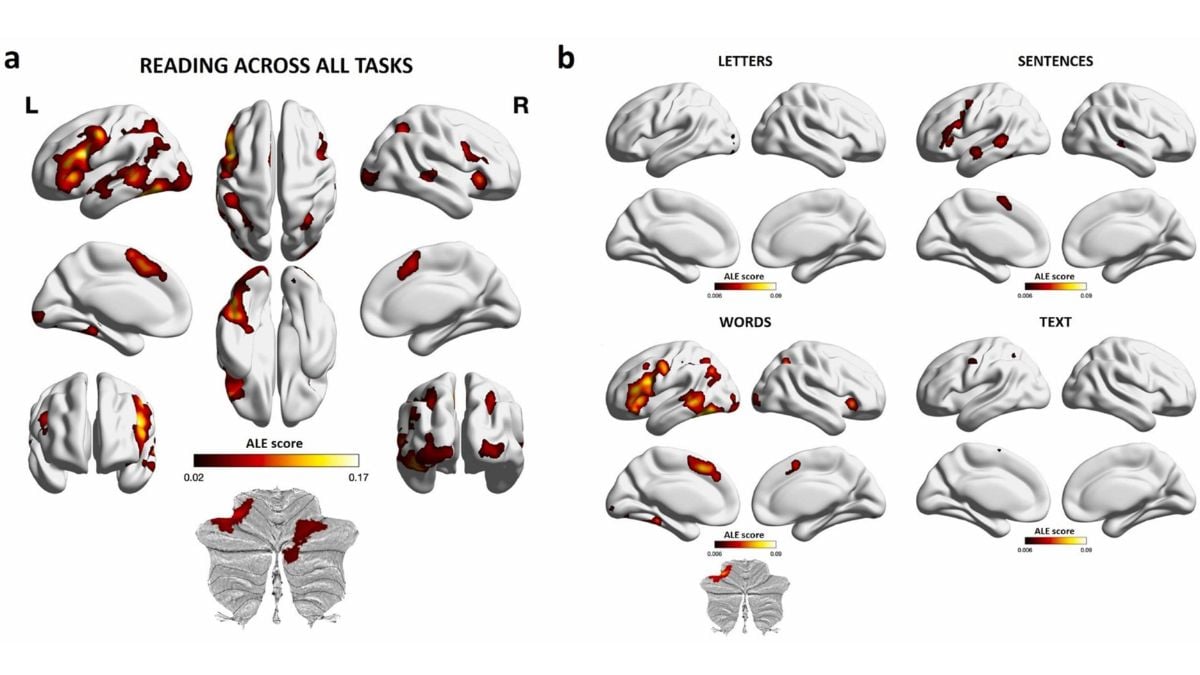What Happens in Your Brain When You Read? New Study Maps the Reading Mind

Scientists concluded in a recent research published in April 2025 in Neuroscience & Biobehavioral Reviews provides an in-depth look into how our brain understands the written language. The study has been conducted by researchers at the Max Planck Institute for Human Cognitive and Brain Sciences. The findings of this research have been derived from 163 neuroimaging studies to understand the neural mechanisms behind reading in depth. This comprehensive analysis has shown how different areas of the brain work in synchronisation, mainly the left-hemispheric regions and the cerebellum, to process different written content.
How the Brain Handles Letters to Full Texts
Sabrina Turker, Philip Kuhnke, Gesa Hartwigsen and Beatrice Fumagalli, the researchers involved in the study, found that specific brain areas get activated based on the type of reading. Researchers found that the left occipital cortex’s single cluster was activated after reading letters, whereas words, sentences and paragraphs activated the left hemisphere. While reading pseudo words, unique areas were involved, which has shown the inability of the brain to find the difference between the language that is known and the unknown.
Silent vs. Aloud Reading: What’s the Difference?
A major discovery in this research is the difference between overt (aloud reading) and covert (silent reading) brain activity. Aloud reading triggers the regions linked to sound and movement, whereas silent reading involves more complex multiple-demand areas. According to the researchers, silent reading needs more mental resources than aloud reading.
Explicit vs. Implicit Reading Tasks
The study also revealed the exploration of how the brain responds to explicit reading, i.e. Silent word reading and lexical decision tasks. The former one involves stronger activation in the regions, just like the cerebellar cortices and left orbitofrontal, whereas the implicit reading activated both sides of the inferior frontal, together with insular regions.
Why This Matters
The insights from the study can help support individuals suffering from reading challenges. After knowing how silent reading reacts differently to the brain, educators and doctors can better customise the medical practices for treating disorders such as dyslexia.
For the latest tech news and reviews, follow Gadgets 360 on X, Facebook, WhatsApp, Threads and Google News. For the latest videos on gadgets and tech, subscribe to our YouTube channel. If you want to know everything about top influencers, follow our in-house Who’sThat360 on Instagram and YouTube.








